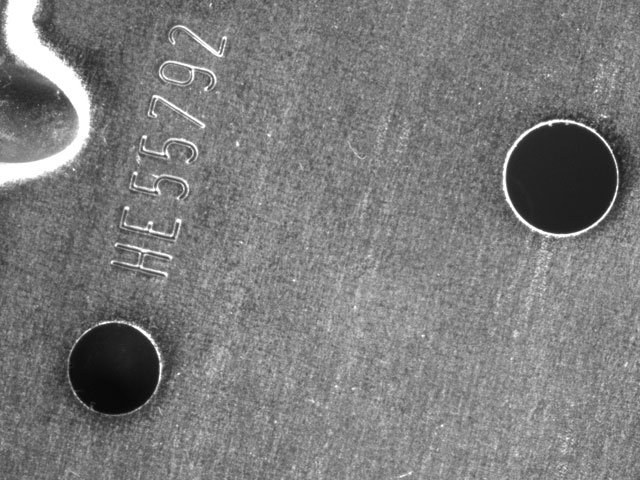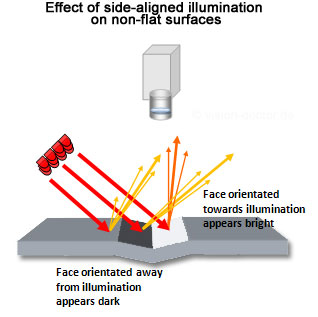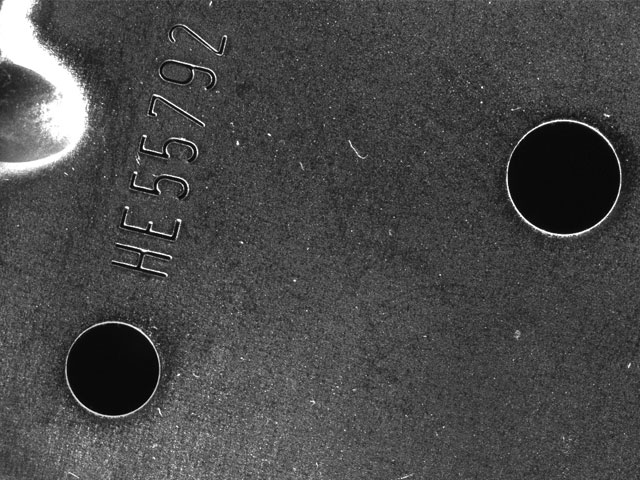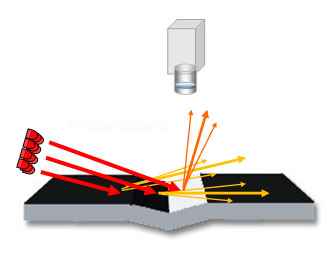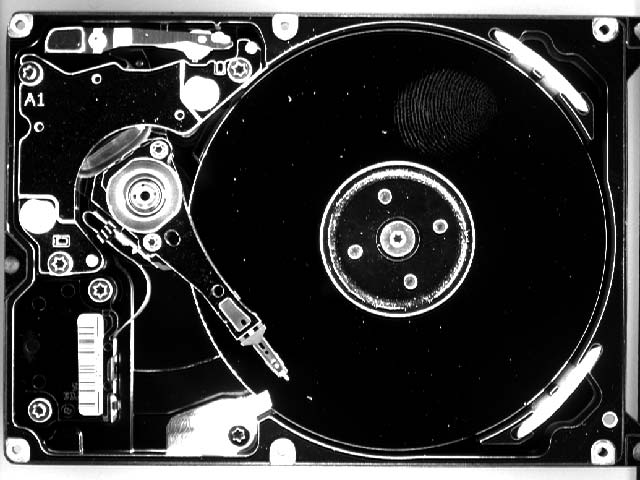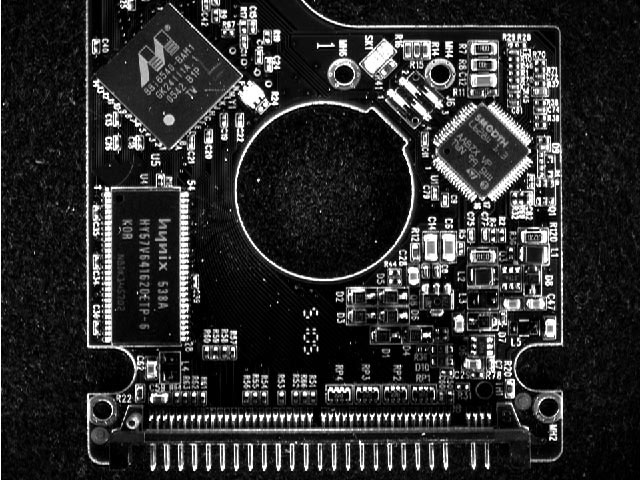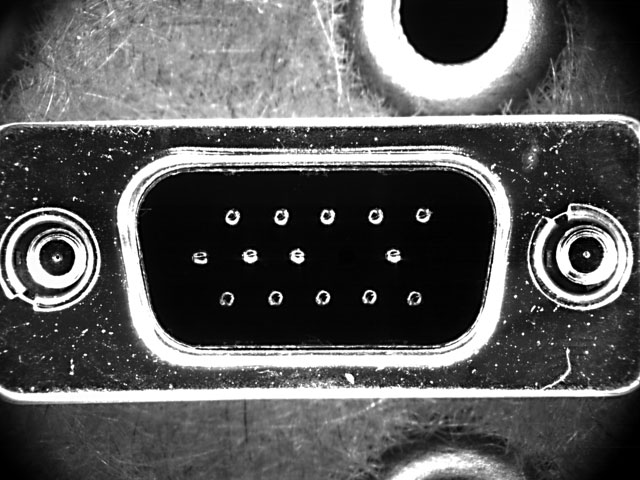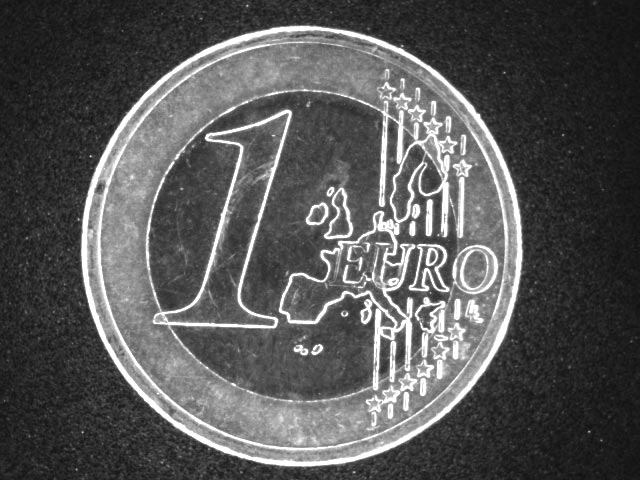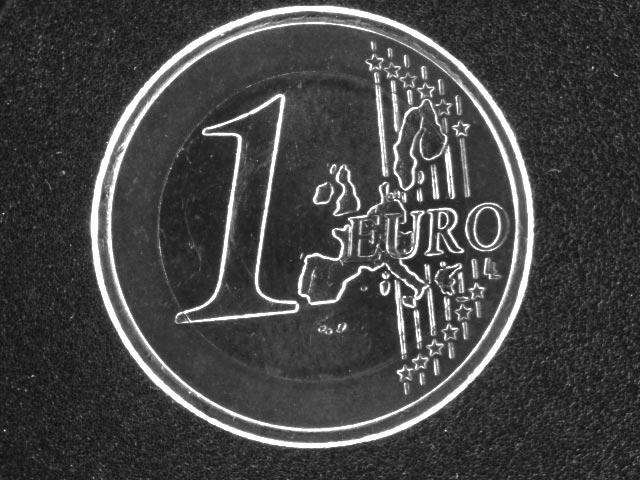Dark field illumination
At a first sight, images captured using dark field illumination seem unusual to the viewer. The light shines at a shallow angle. According to the principle "angle of incidence = angle of reflection", all the light is directed away from the viewer (the camera), the field of view therefore remains dark.
Inclined edges, scratches, imprints, slots, and elevations interfere with the beam of light. At these anomalies, the light is reflected towards the camera, or mostly only strayed. These defects appear bright in the camera image in this way.
Slightly oblique illumination
This scheme illustrated here already shows the gradual transition from bright field to dark field illumination. Due to stray light effects caused by the texture, the surface is is still sufficiently bright that the object is easy to recognise. However, inclined edges and notches are brighter than the remaining image areas, which is typical for dark-field illumination.
Side orientated light
Working principle
Light inciding at very shallow angles
The scheme illustrated here shows the effect of a very strong dark field. The light shines on the surface at an extremely shallow angle. Small scratches, scuffs, dust particles, and even fingerprints on polished surfaces can be made visible, while the surface appears very dark.
Low angle dark field
Principle darkfield illumination
Extreme dark-field illumination should be positioned very close to the surface. Working distances from 0.5 to 2 cm are maximally possible. If the distances are greater, the surface is no longer illuminated.
Examples of dark field illumination
Hard disk with dark field
Dark field circuit board
Connector with pins
Slightly low angle dark field
Extreme dark field
Important for machine vision
- Usually a small working distance is required for dark-field illumination.
- The larger the diameter of the illumination, the more directional is the light because the stray light portion decreases in proportion to the distance. A 150-mm illumination can well be used for an object with a diameter of 50 mm.
- By means of artificial masking using a pinhole aperture / panel with a cut just above the object, the scattered light can be filtered out to an even greater extent.
- Extremely directional dark field illumination can be generated using line lasers, too, which incide on the object from one, two, or several sides. For this purpose, the laser is defocused in order to form line a few millimetres wide which is directed on the object at a shallow angle.




